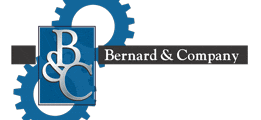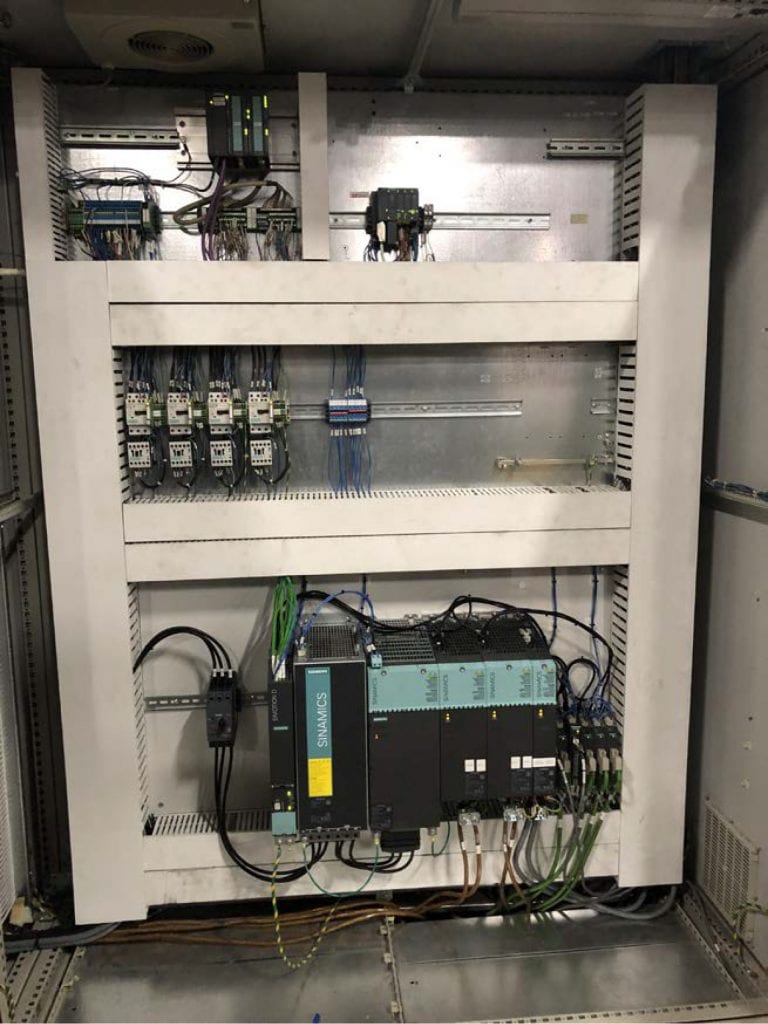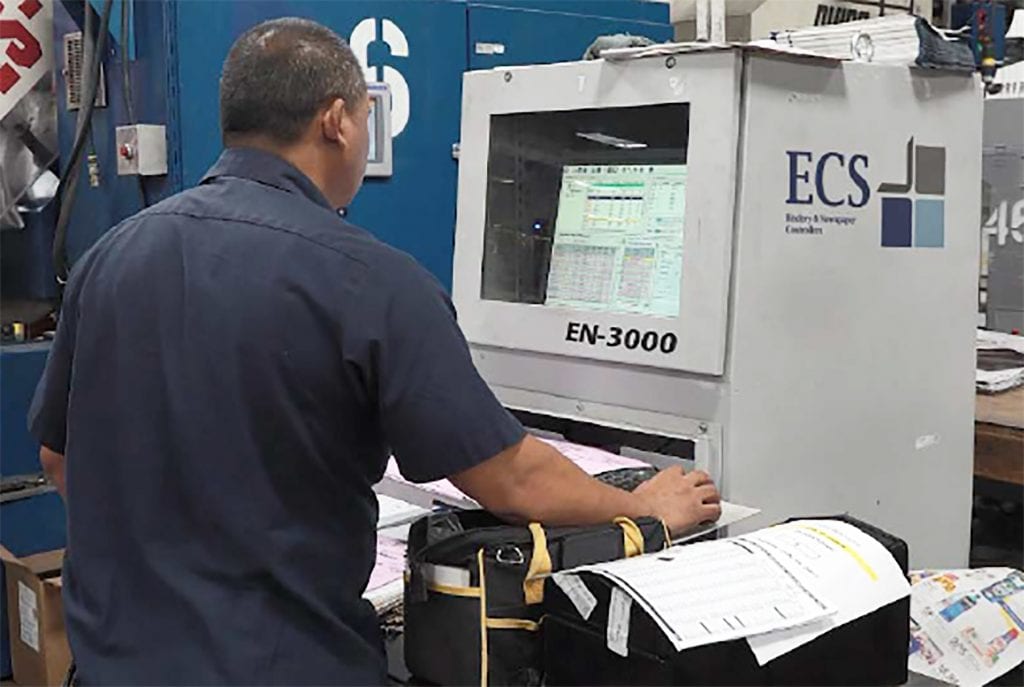Contact us today:
Author Archives: Bernard & Company
Exact Metrology Provides Updates on PolyWorks Inspector™ and Hexagon Romer

A new feature in the PolyWorks Inspector™ is multi-piece editing. Users can now make changes in one piece that can be propagated to other pieces. If a user has multiple pieces, they can make changes like creating, editing features, alignments, reporting items, etc. Then, these changes can be transmitted to past and future pieces/templates, create custom propagations or just apply the changes to the current piece. After choosing the propagate option, the user sees the changes in the other pieces and/or templates including report(s) or report items.
Another update of PolyWorks Inspector™ pertains to augmented GD&T. Center point features can now be reported with more capabilities. These include circularity, flatness, perpendicularity, etc. Users can also see MIN/MAX deviations and can view the color arrow deviation tags.
An online tutorial shows how to make sure the Hexagon Romer Absolute Arm is still in calibration. First, the bar artifact needs to be placed correctly to scan it. The ideal location is centered with the main axis of the arm at a distance away where it will be just below the elbow when the arm is extended out. To secure the bar, use pre-drilled tapped holes. They accept simple machinist fixturing to hold it in place. C-clamps can also be used to secure the bar to a rigid table. When doing a length checkout, only the 15 mm master probe should be used. Next, the user needs to open RDS Data Collector. Used with Hexagon Romer Absolute Arm, the software allows the operator to check the accuracy of the arm and probes and calibrate/align the probes and scanner as necessary. To start probing, move the probe to the first position. The probe needs to be properly seated in the conical feature at each end of the bar. Following the prompts in RDS, move the probe to the end conical features and pull the trigger to record a point. Once ten positions have been recorded, RDS will display the results. The MIN/MAX values should be below the standard values for the type of arm being used.
Exact Metrology is ISO, AS9100 Certified as well as FFL and ITAR Registered.
Exact Metrology, with facilities in Cincinnati, Ohio, Moline, Illinois and Milwaukee, Wisconsin, plus affiliated offices throughout the country, is a comprehensive metrology services provider, offering customers 3D and CT scanning, reverse engineering, quality inspection, product development and 2D drawings. The company also provides turnkey metrology solutions, including equipment sales and lease/rental arrangements.
For more information, please contact:
EXACT METROLOGY, INC.
Dean Solberg
20515 Industry Avenue
Brookfield, WI 53045
Local: 262-533-0800
www.exactmetrology.com
deans@exactmetrology.com
EXACT METROLOGY, INC.
Steve Young
11575 Goldcoast Drive
Cincinnati, OH 45249
Local: 513.831.6620
Toll Free: 866.722.2600
www.exactmetrology.com
stevey@exactmetrology.com
Goss Magnapak Inserter Performance Improves 15% With Siemens Controls
Siemens “Solution Partner” Advanced Industrial Controls provides Goss Magnapak inserting system upgrade together with Enternet Control Systems (ECS) in seven weeks.
In the world of high-speed Newspaper production printing and inserting, the need to remain at peak performance is paramount. Recently, a leading bindery and newspaper equipment and printing controller supplier, Enternet Control Systems (Glastonbury, Connecticut) was presented the challenge to retrofit a Goss Magnapak newspaper inserting system. ECS serves many of the largest magazine, catalog, and newspaper printers in the country.

Turning to its partner on this project, Advanced Industrial Controls (AIC), a St. Louis area Siemens-authorized Solution Partner who specializes in field service and machine retrofits in the printing industry, ECS conducted a joint situation analysis to determine the components and software needed. It was decided that a complete electrical control and motion upgrade was required, necessitating the replacement of obsolete and tech-incompatible components, software and HMI.
The obsolete OEM inserter controls on the machine were to be replaced with a new ECS eNews Model 3000 Controller for monitoring and control of the inserter, along with downstream tracking and stacker control. Interface to the new controller over ProfiNet was required to allow multiple machine components to be interactively linked. Interface to customer’s existing planning system was provided through the eNews system as well as connectivity to the customers other four (4) existing eNews systems to enable flexibility in production as well as comprehensive reporting.
As the systems integrator and controls specialist on the project, AIC utilized the industry-proven Siemens Printing Solutions system architecture, which includes all the hardware platforms and software libraries for high usability and standardization. Having this capability handy drastically reduced the system evaluation and field testing required, from the sensors to the drives, PLCs, motion controller, HMI and wireless data communications hardware, as well as software.
Padraic Stapleton, project engineering manager from AIC, comments, “Using our experience retrofitting machines across many industries and our in-depth knowledge on the operations on the Magnapak, we first determined what functionality was needed for this machine. This included high-speed motor synchronization, safety requirements, high-speed signal processing to and from the ECS eNews controller, an ability to recover smoothly from bus failures, elimination of obsolete components, simplified operator controls and the ability for the customer’s maintenance personnel to troubleshoot issues. We then utilized our experience with the various Siemens product lines and chose the appropriate components and software to meet the requirements.”
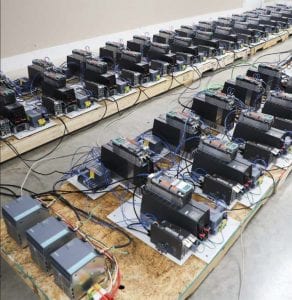
Stapleton further noted that an aggressive project schedule was devised to fit the customer’s production requirements. This schedule comprised pre-engineering and fabrication that were performed at the AIC facility, including testing. This pre-onsite work allowed AIC to minimize the machine’s downtime and the actual installation was completed in seven days, as planned. The customer was ready to go online in seven weeks, also per plan. “This time frame exceeded the customer’s expectations and, overall, the project was completed on time, on budget and without any hiccups,” Stapleton mused.
An ambitious goal was set for this retrofit, as the result of these component and software upsides. The target for completion of the entire project was only two months, with installation calculated at one week and going back online in seven weeks.
Functionally, all hardware was powered up, configured and tested at AIC by their personnel, prior to beginning the install. AIC prewired all the hardware and also manufactured the back panels for the hardware, to further reduce install time onsite. At the customer’s location, all installation was indeed accomplished in one work week, performed by AIC technicians, so no other outside contractor costs were incurred, and plant personnel were freed to perform other tasks during the install time.
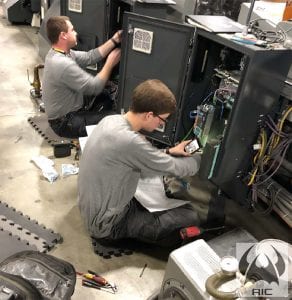
The startup was indeed completed in seven weeks, including all I/O checks, drive/motor tuning, testing of the entire Siemens motion control system plus training of the operations and maintenance personnel. Every station in the entire line on the Goss Magnapak was revamped, including the PLC enclosures, main drive cabinets, hoppers, releases, master and slave HMI, with wireless Scalance data transmitters provided for flexibility and mobility in the system.
Following restart of the line and over a tracked period of time in production, the end user’s plant has reported an ongoing net production increase of 15%, compared to the line performance before this upgrade and retrofit of the motion control system. Benefits to the end user included the elimination of obsolete components, a substantial increase in reliability with the new Siemens hardware, increased diagnostic capability resulting from the built-in data tracking tools and connectivity on the Sinamics drive system, a decrease in the complexity of the machine functions due to the incorporation of integrated safety functions in the new drives and most notably increased usability and flexible staging possibilities of the eNews controller onboard. At the most basic level, the distributed I/O system is highly scalable and connects seamlessly to the central controller over Profinet. A plug-and-play scenario is provided, making alterations on-the-fly more practical, faster and requiring less training time for the operators.
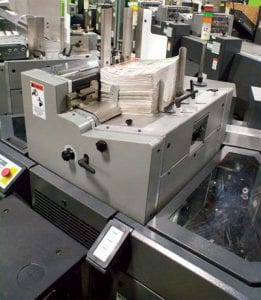
From the safety side, all e-stops, pushbuttons and guard switches are connected to the safety PLC through integrated safety I/O, with Siemens ProfiSafe onboard to control the STO (Safe Torque Off) function to all the drives in the system.
Device replacement was simplified, as the new devices can be detected and configured via the communication network to allow the replacement of modules without the need for any reconfiguration. The system automatically addresses and names the replacement modules, saving substantial setup time per station.
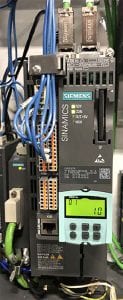
With integrally redundant Sinamics drive communication, in the event of one hopper drive or Profinet cable failure, all other hoppers remain operational and the drive can be disabled from the HMI without rewiring.
Following restart of the line and over a tracked period of time in production, the end user’s plant has reported an ongoing net production increase of 15%, compared to the line performance before this upgrade and retrofit of the motion control system. Benefits to the end user included:
- elimination of obsolete components
- substantial increase in reliability with the new Siemens hardware
- increased diagnostic capability resulting from the built-in data tracking tools and connectivity on the Sinamics drive system
- decrease in the complexity of the machine functions due to the incorporation of integrated safety functions in the new drives
- increased usability and flexible staging possibilities of the eNews controller onboard.
At the most basic level, the distributed I/O system is now highly scalable and connects seamlessly to the central controller over Profinet. A plug-and-play scenario is provided, making alterations on-the-fly more practical, faster and requiring less training time for the operators, according to the end user.
Stapleton concludes, “The Siemens drives were chosen due to multiple reasons, including integrated safety functionality, built-in high speed inputs and outputs that were required for specific machine functions, proven hardware reliability, simplistic overall hardware architecture, proven motion synchronization functionality and the ability to have the drive configuration parameters integrated into one software programming package.”
Main drive, PLC enclosures, releases and hopper controls all retrofitted by AIC. Installation required only one week, and startup was completed in seven weeks, including I/O check, drive tuning, testing and training.
AIC is a full-service integrator of electrical and automation systems, working the full suite of Siemens motion control components, robotic, SCADA, networking, power distribution, bar code, RFID and vision systems. The company further provides turnkey control panel fabrication, field service and parts inventory for customers.
With over 30 years in the industry, ECS offers its customers a wide range of inline bindery, newspaper, wrapper, mailtube and co-mail control systems for selective pocket feeding and tracking, multi-station inkjet addressing plus integrated camera technology for signature recognition, read and print capability, IMB and bar code verification.
For more information on this story, please contact:
Jason Tretter, President
Advanced Industrial Controls
1000 Eleven South
Columbia, IL 62236
618-977-4576
www.advancedindustrialcontrols.com
OR
Dave Carlos, Sales & Marketing Manager
Enternet Control Systems
21 Sequin Drive
Glastonbury, CT 06033
877-477-1325
www.ecsbindery.com
OR
John Meyer
Siemens Industry, Inc.
Digital Industries — General Motion Control
380 Kent Avenue
Elk Grove Village, IL 60007
Phone: 847-640-1595
www.usa.siemens.com/motioncontrol
Cutting Tool Manufacturers Find Opportunity in the Billion Dollar Deep Hole Drilling Market
Understanding the application and being aware of common challenges can help make a difficult operation both productive and profitable
The global drilling tools market was valued at USD 5.79 Billion in 2016 and is expected to grow at a CAGR of 4.75%, during the forecast period, to reach USD 8.61 Billion by 2022.* Producing deep holes in an effective and efficient way is considered a challenging application. Cutting tool manufactures need to provide their customers with a product that has predictable tool life, accurate surface finish and repeatability at a good price to be competitive in the market. Thomson Mathew, ANCA Product Manager explains the different types of cutting tools for this application and how to overcome some common challenges in deep hole drilling.
Thomson Mathew starts: Deep hole drilling is a process to produce holes in metal at high depth-to diameter ratios on CNC Machines. For normal drilling processes, the length to diameter ratio will be less than five times the diameter and if the length to diameter ratio goes beyond five, the process is called deep hole drilling. This can be effective in diameters ranging from 1mm – 200mm [0.04in – 8.00 in] and will require special drills with through coolant holes to deliver high pressure coolant to evacuate chips cleanly and achieve hole tolerances and surface finish.
Some common deep hole drilling process include gun drilling, BTA drilling (Boring and Trepanning Association) and conventional carbide twist drills. All these processes have their own merits in deep hole drilling based on hole diameter and tolerances.
BTA drilling is an effective method of drilling deep holes, as it is cleaner, reliable and capable of achieving larger diameters at higher feed rates. BTA drilling is effective in holes from 20 – 200 mm [0.80 – 8.00 in], a larger size range than gun drilling and carbide twist drills.
Gun drilling was originally developed to drill out gun barrels and is used commonly for drilling smaller diameter deep holes. The depth-to-diameter ratio can be even greater than 300:1. The key feature of gun drilling is that the bits are self-centering; this is what allows for such deep accurate holes.
Carbide twist drills with through coolant holes are also commonly used in several deep hole drilling applications. The challenge is to manufacture and re-grind these drills with minimal runout and requires an additional axis on machines to support the flute grinding process. ANCA CNC Machines has this ability to support and manufacture the full range of long series drills with minimum runout with the P-axis Arobotech system. The system also caters for the back taper on long series drills by allowing the support pads to adjust automatically to the taper.
Common challenges in deep hole drilling
Through coolant or internal coolant – This improves chip evacuation while cooling the cutting edge. Coolant is flushed down to the bottom of the hole, which, in turn, is pushing the chips back up toward the top. ANCA software has the ability to design and verify the coolant holes right at the design stage to avoid coolant hole breakage into flutes and eliminating scrap.
Hole Straightness – The “margin or radial land” is the portion of the drill that is actually contacting the hole. A single-margin drill (one margin per flute) is preferred in long chipping materials. Single margin drills provide additional clearance in the longer chipping materials whereas a double-margin drill (two margins per flute) provides excellent hole straightness compared with a single margin drill. Although not as common, double margin drills with a floating second margin are also available where a compromise can be made on hole straightness and chip evacuation. So, more margins add accuracy while maintaining a higher surface finish but restrict the amount of clearance for chip evacuation.
Tool runout control – One of the most significant challenges of deep hole drilling is maintaining control of runout, which increases with cutting tool length. A more accurate method of tool holding like the premier plus, combined with the P-axis Arobotech support can deliver the tools with minimal runout and deliver longer tool life.
For further information, please visit:
https://machines.anca.com/Contact
ANCA is a market leading manufacturer of CNC grinding machines. It was founded in 1974 in Melbourne, Australia where the company still has its global headquarters. ANCA has offices in the UK, Germany, China, Thailand, India, Japan, Brazil and the USA as well as a comprehensive network of representatives and agents worldwide.
ANCA CNC grinders are used for manufacturing precision cutting tools and components across a diverse range of competitive industries including cutting tool manufacture, automotive, aerospace, electronics and medical.
Continue reading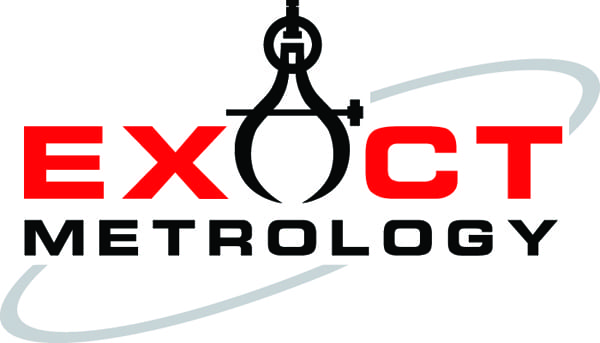
Exact Metrology Offers Customer Support through Training Videos
Exact Metrology, a comprehensive metrology service provider, is offering free training videos on the company’s YouTube channel. During these trying times, the company has started creating a series of training, tips and tricks, unboxing and product videos to provide additional information to their clients. The videos can be found at https://www.youtube.com/user/ExactMetrology/videos. Interested parties can bookmark the link and return often to see the latest creations.
The plan is to release three videos per week. The topics covered to date include PolyWorks Inspector™, Geomagic Design X and 3D data collection tools such as Hexagon Romer Arms, Artec scanners and GOM CT scanners. Customers can learn more about these topics on the Exact Metrology website. In addition, they can offer suggestions for upcoming videos by sending an email to training@exactmetrology.com.
Exact Metrology is an ISO 9001:2008 and AS9100 Certified Company
Exact Metrology, with facilities in Cincinnati, OH, Moline, IL and Milwaukee, WI and affiliated offices throughout the country, is a comprehensive metrology services provider, offering customers 3D and CT scanning, reverse engineering, quality inspection, product development and 2D drawings. The company also provides turnkey metrology solutions, including equipment sales and lease/rental arrangements.
Exact Metrology offers a complete line of portable scanning and measurement technologies as well as contract measurement for 3D laser scanning services, reverse engineering services, non-contact inspection, metrology services, and 3D digitizing. The company’s newest equipment includes a CT Scanner, the first in America being used for metrology rather than medical testing. Exact sells and rents metrology equipment solutions, in addition to providing testing as a service and application software training.
For more information, please contact:
EXACT METROLOGY, INC.
Dean Solberg
20515 Industry Avenue
Brookfield, WI 53045
Local: 262-533-0800
www.exactmetrology.com
deans@exactmetrology.com
EXACT METROLOGY, INC.
Steve Young
11575 Goldcoast Drive
Cincinnati, OH 45249
Local: 513.831.6620
Toll Free: 866.722.2600
www.exactmetrology.com
stevey@exactmetrology.com
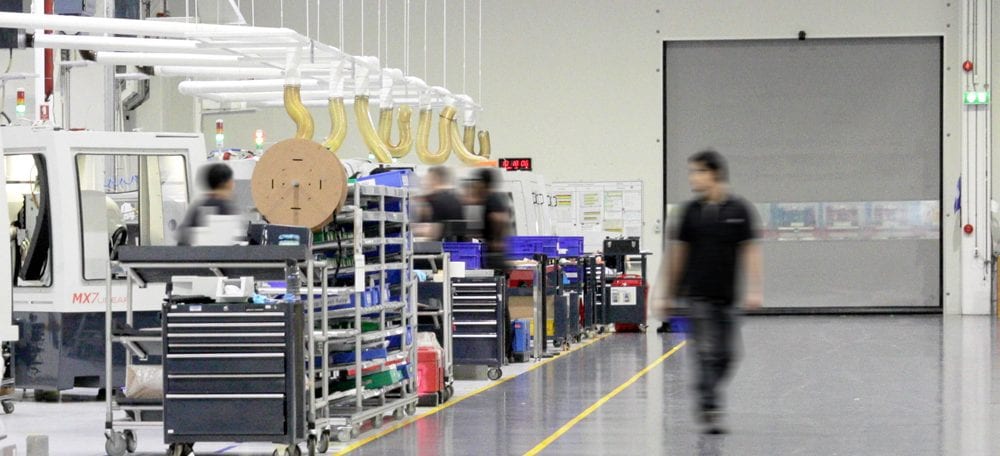
ANCA Joins the Fight Against COVID-19 – Manufacturing Components for Ventilators to Support the Medical Industry
ANCA is a partner to the NOTUS Emergency Ventilator Program, a Grey Innovation-led initiative supported by the Victorian Government and Advanced Manufacturing Growth Centre (AMGC) to manufacture and assemble components of ventilators
Coming to the aid of a medical system crushed world-wide by the COVID-19 pandemic, ANCA has joined an important consortium to rapidly manufacture invasive ventilators within Australia. This initiative directly addresses the critical supply of mechanical ventilation equipment to support COVID-19 patients requiring ventilation to survive. Banding together with other Australian manufacturing businesses, the consortium can harness various industry capabilities to make more ventilators sooner.
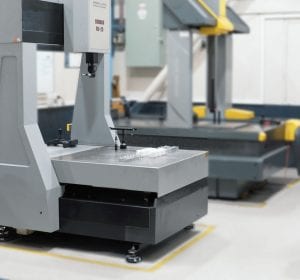
Co-founder and managing director, Pat Boland said: “ANCA is an advanced manufacturer that supplies to a wide range of industries, a key one being the medical industry. In fact, ANCA has been classified in the U.S. as an essential industry because so many of our customers are manufacturing medical components.”
ANCA is an Australian manufacturer of CNC machines that produce quality precision cutting tools. Their experience in advanced manufacturing means they can guarantee a micron precision, a capability which means the company could pivot and utilise its machine shop to manufacture parts for the ventilators. An Australian-based company, ANCA exports 98% of their product and boasts a global network to service global customers. Fully Australian and privately owned, ANCA machines have the capacity to machine components in brass, aluminium, plastic and steel and has skilled assembly capabilities.
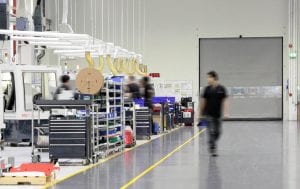
Around the world it is predicted that total demand for ventilators could run into the tens of thousands, with existing manufacturers unable to meet demand.
“This is a global emergency and in my view it is incumbent on every individual in every organization to do everything they can to help deal with it. And in the case of ANCA, we have capabilities that are a good match and it’s the right thing to do. We are very good at manufacturing the kind of parts that are needed for ventilators and it is a really great way for us as an organization to give something back to the community,” said ANCA Group CEO, Chris Hegarty.
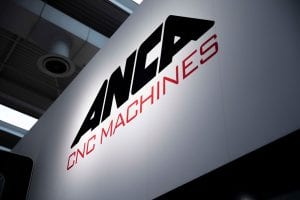
With production already in progress to meet tight timeframes; ANCA has hit the ground running with dedicated machinists willingly working weekends and over the Easter break to make parts and help combat coronavirus.
Production Operations manager, Mark Patman explains: “With an extremely tight timeframe, we’ve jumped in and started manufacturing the parts; it’s a team effort across the business to get it done. As a well-established global business, a lot of the processes required to deliver this type of project are already in place at ANCA. We can leverage off all our systems to be able to deliver the project.”
ANCA is utilizing a cross-functional team comprising manufacturing, supply chain, project management, stores logistics, and safety to support this crucial work.
Demonstrating agility in moving from machine tools to ventilators ANCA already has a working relationship with the AMGC and is pleased to be collaborating with Grey Innovation to ensure that Australia does not have a shortfall in ventilators, critical for our COVID-19 response. Answering the call from the Australian Government, rapid production will continue to supply contracts and contribute to the coronavirus crisis strategy.
For further information, please contact:
Sepideh Zandieh
Acting PR and Communications Manager, ANCA
M: +61 439 316 131
Sepideh.Zandieh@anca.com
ANCA is a market leading manufacturer of CNC grinding machines. It was founded in 1974 in Melbourne, Australia where the company still has its global headquarters. ANCA has offices in the UK, Germany, China, Thailand, India, Japan, Brazil and the USA as well as a comprehensive network of representatives and agents worldwide.
ANCA CNC grinders are used for manufacturing precision cutting tools and components across a diverse range of competitive industries including cutting tool manufacture, automotive, aerospace, electronics and medical.
Continue readingSiemens Engineer Shares Her Experience

Moving to Sao Paulo, Da Silva worked as a software developer and also as an automation engineer and project engineer. She started working for Siemens in the IT department, then moved to product design and software development. Da Silva’s current job title is Head of Artificial Intelligence and Edge Computing Deployment. She works in artificial intelligence and edge computing, as well as participates in R&D to test new projects. While she is very motivated in these areas, Da Silva would like to combine her work in artificial intelligence with robotics, in the next phase of her career.
“A combination of advanced smart technologies, artificial intelligence (AI) empowers machines to perform tasks that were traditionally only possible using human intelligence. Within manufacturing, AI has evolved in its capabilities over the years and found innumerable applications in industrial automation,” Da Silva notes.
The benefits of AI can be divided across product, process and strategic levels of manufacturing. At the product level, AI can be used to deliver end-user benefits, while at the process level, it can be applied to automate and advance operational capabilities. At the more strategic level, AI can be applied to deliver insights that inform decisions made by management. Da Silva says the AI revolution will introduce several capabilities into future automation systems, including improved efficiencies, quicker time to market, increased customization plus reduced manufacturing and operating costs, integrative factories, effective asset management and more. In addition, artificial intelligence helps solve complex issues with minimal or zero human interaction, enhances safety functions by accessing industrial areas that are hazardous to humans and also solves a diverse set of tasks simultaneously. She adds, “Automation systems embedded with AI allow real-time integration such as between a programmable logic controller (PLC) and AI’s data processing capabilities. Because all devices are connected, there is a huge amount of data that is generated. AI further helps manufacturers convert the data into insights that can be used to predict equipment failures and prevent mechanical downtimes.“
Industrial Edge enables intelligent, high-performance data analysis directly within the automation system running on established standards like PLCs, distributed control system (DCS) and supervisory control and data acquisition (SCADA) protocols. With Edge Computing, large volumes of data can be processed locally on the plant floor. It unfolds its full potential in combination with cloud-based analytics on the open Industrial Internet of Things (IIoT) and Siemens Mindsphere, the company’s proprietary cloud-based technology. According to Da Silva, “This greatly reduces storage and transmission costs for users, as large data volumes can be pre-processed and only the relevant data is transferred to a cloud or IT infrastructure. The optimized data points, transferred to the cloud, provide access to more computing power and large storage capacities. With Industrial Edge, users enjoy all the benefits of edge and cloud computing, optimally tailored to a company’s specific requirements.”

In 5 to 10 years, Da Silva plans to continue working with technology and see how it evolves. The technology that most excites her in the future is artificial intelligence because, since its beginning in the 1950s, there have been constant new developments. Outside of work, Da Silva enjoys playing games, especially the digital kind. She lives in a smart home and always tries to learn more about technology, while she regularly converses with her virtual home “assistant”.
For more information, please contact:
Karen Kasik, Manager of Marketing Communications
Siemens Industry, Factory Automation
Phone: 470-709-3641
Email: Karen.kasik@siemens.com
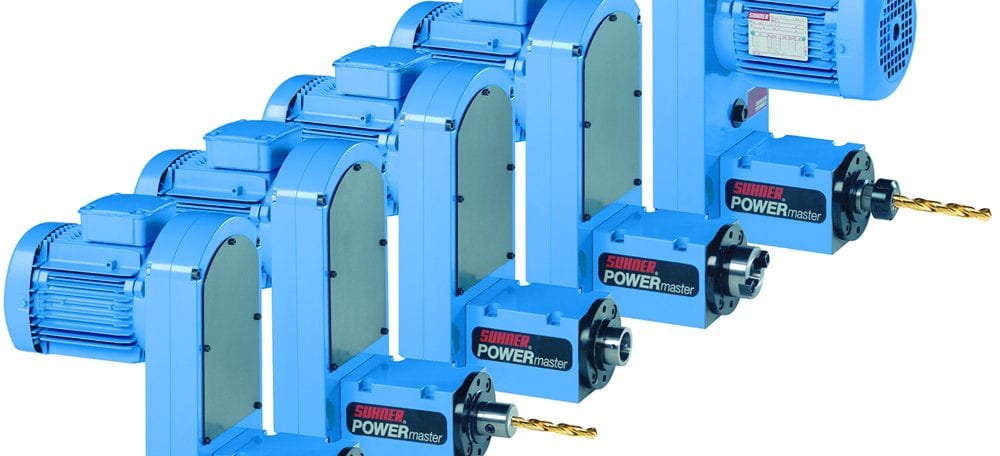
Suhner Offers Newly Designed Version of BEX 15
This new version features a spindle speed increase of 25%
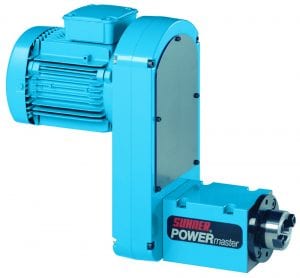
A new style timing belt drive multiplies the motor speed up to 13,050 RPM spindle speed. An AC inverter drive is used to increase the spindle speed up to 23,000 RPM at 87 Hz. Standard motor mounting on BEX 15 machining spindles is in the rear. Optional front motor mounting is available upon request. Additional optional features include frequency converter and direct drive servomotor.
The machining unit BEX 15 can be applied in axial and radial orientation, directly mounted to a Suhner linear slide assembly Type UA15-PH or UA15-CNC. In this combination, numerous operations such as milling or demanding drilling cycles including jump or peck feed can be accomplished easily.
Four optional toolholder systems (Collet ER25, ISO30, HSK50 and Weldon), standard air purge connections for spindle and belt housing including a number of additional options (for example, coolant through the spindle or automated tool change features) make this machining unit type BEX 15 adaptable and an optimal choice for demanding and specific inline machining requirements. BEX 15 with HSK spindle includes an integrated 4-point clamping system form C, for manual tool clamping.
For more information, please contact:
Lee Coleman, National Sales Manager-Machining Division
Suhner Industrial Products Corp.
25 Anderson Road SW
Rome, GA 30161 USA
Direct: 706-314-2927
Mobile: 706-409-1876
Fax: 706-235-8045
lee.coleman@suhner.com
www.suhner.com
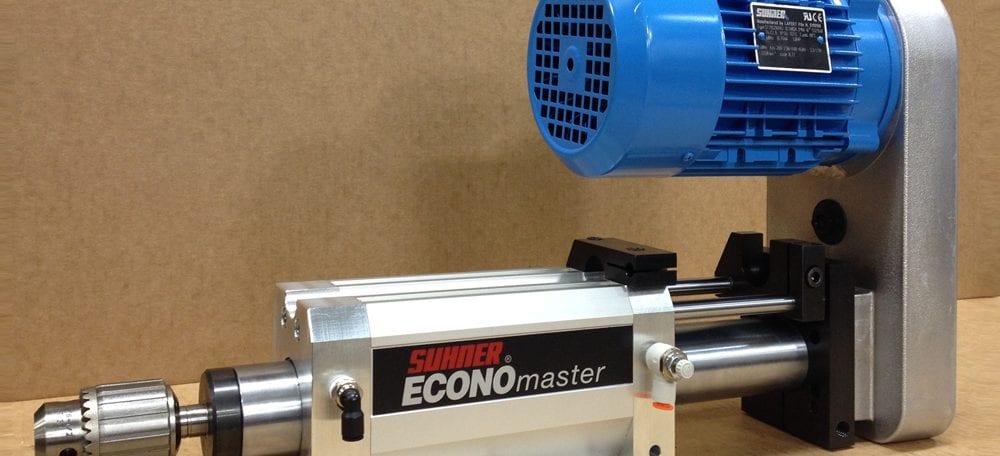
Suhner Economaster® Drilling Units Help Mid-State Engineering
Quill-feed drill used Suhner drill heads for accuracy and reliability
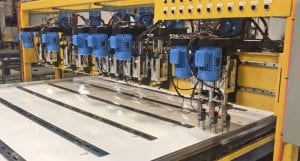
This quill-feed drill unit has selectable drill heads that can be used at once or individually. Using servo drive motors, the machine auto indexes down a table to ensure precision hole locations across a 60-foot span. According to Tom Raver, engineering manager at Mid-State Engineering, “The machine helps give our transportation customers a competitive advantage, increasing production volume while reducing rework at the same time.”
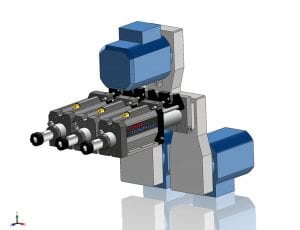
Founded in 2008, Mid-State Engineering features an in-house electrical and mechanical engineering staff with over 100 years of manufacturing engineering experience. This vast experience is used to design and build unique systems tailored to customer applications. In addition, the in-house mechanical and engineering staff also provide in-house fabrication. This makes Mid-State Engineering a one-stop shop for companies looking to enhance their processes or implement new ones.
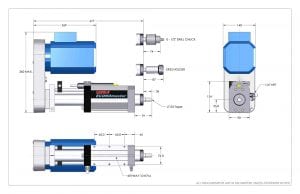
For more information, please contact:
Lee Coleman, National Sales Manager-Machining Division
Suhner Industrial Products Corp.
25 Anderson Road SW
Rome, GA 30161 USA
Direct: 706-314-2927
Mobile: 706-409-1876
Fax: 706-235-8045
lee.coleman@suhner.com
www.suhner.com
The Power of PR
PR Should Supplement (Not Replace) Your Advertising
By Shari VanZant
Up until the last couple of decades, industrial marketing meant placing print ads in trade magazines and periodically sending direct mailings to reinforce the message. Then along came the internet and the entire direct mail/PR process was completely revamped.

Standard practice previously involved sending press kits through the mail and then waiting for an appearance in print several months later. In this digital age, PR is sent by email and regularly appears the same day we send it – making PR a more valuable tool than ever.
While it is important to remember that PR should always be used as a supplement to advertising, and never in its place, it is a very effective way of increasing your company and product awareness.
At Bernard & Company, our PR program goes a step further. After a press release is sent, our team regularly searches for our clients’ PR appearances, both online and in print magazines and tracks each one that is found. An archive is built and presented to the client at the end of every quarter with a dollar value assigned to it as if it were paid advertising space, with most clients getting a return of many times the cost spent. This helps show the value of our program, and proves once again, the power of PR.
Continue readingThe Distinction With a Difference
We’re a full-service, strictly industrial ad/PR agency, started by Fred Bernard in 1975. I joined him shortly thereafter, bought the agency in 1982 and I’m still here. Lots has changed over the years, but one word hasn’t. INDUSTRIAL.
Fred came out of Honeywell and Ryerson Steel, while my background was electrical and automotive. Once, we had a high concentration of pump, valve, filter and controls clients. Today, we have more machine tools, production equipment for discrete manufacturing and the market leader in motion control. Our longest-retained client (62 years!) is the global leader in industrial ovens and furnaces and, this year, we’re celebrating 50 years with the market leader in rubber molding machinery, a client we helped conquer the North American market, in which they had no presence in 1970, when they sold their first two presses to one of Fred’s filter clients.
Today, we remain a full-service, strictly industrial ad/PR agency, but we supply our clients social media, geotargeting, website development, full online marketing services, trade show work, video and our unique Special PR program, which nets our largest guys over a MILLION in equivalent ad space, every year. We create the content AND place it in all the right spots.
Being industrial, we do no broadcast, billboard, newspaper or other consumer advertising and we’re not even B2B, as we do no commercial biz. We are STRICTLY i2i, that is, industrial engineers, designers, manufacturing and production pros, talking to others of the same stripe.
Even our most generic equipment client could conceivably sell to less than 150,000 companies globally. One client has a market universe less than 700 in all of North America.
This means we do pinpoint marketing to the right eyeballs, not mass marketing to the masses.
That’s the distinction with a BIG difference between Bernard & Company and other agencies.
Thanks for reading our agency newsletter,
Tim Daro
Continue reading